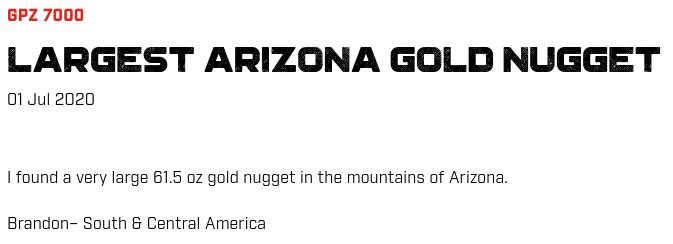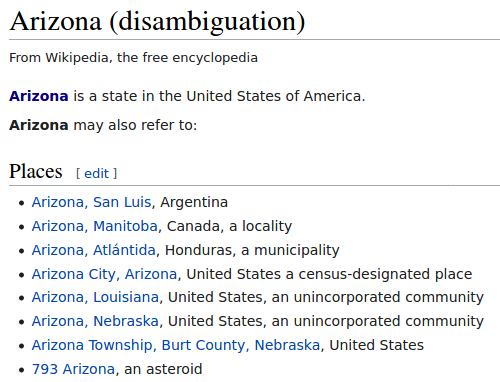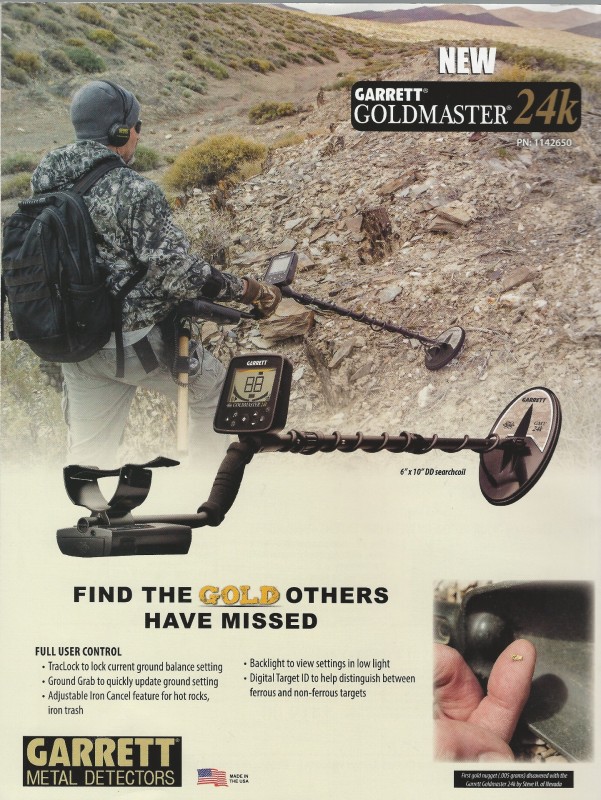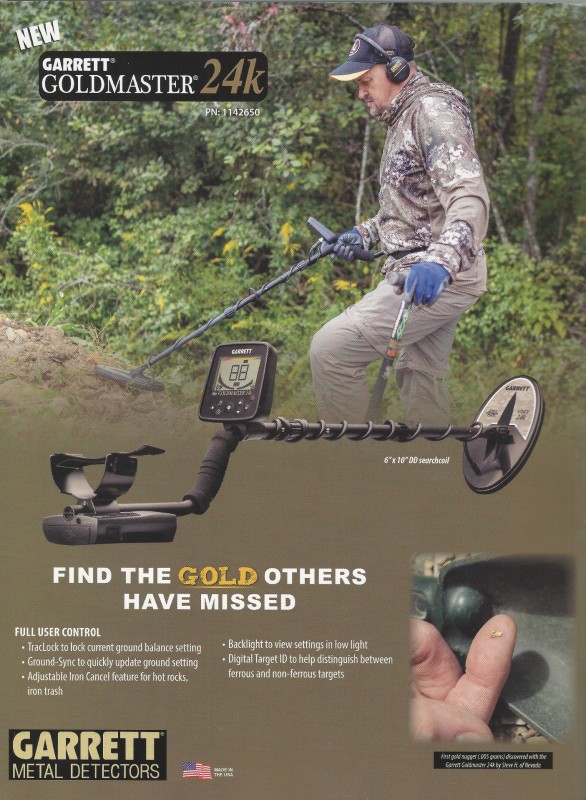-
Posts
5,791 -
Joined
-
Last visited
-
Days Won
12
Content Type
Forums
Detector Prospector Home
Detector Database
Downloads
Everything posted by GB_Amateur
-
Welcome, stillair1! From your sidebar it looks like you have the tools to recover the goods from near that pier. Hope you also have the weather (but I just read about a storm that hit GB and then Scandanavia, Germany,...). If not, I suspect with the lengthening daylight (N. Hemisphere only 😉) you and we here will soon.
-
Part 1. Flying Eagle and Indian Head Cents (aka FE's and IHP's). 1a. Introduction and experimental setup details. This issue comes up occasionally, and not just for these coins. Periodically coin hunters get spurious/unexpected digital Target ID's (dTID's) for recovered coins and wonder why. There are two obvious explanations: 1) the initial composition (i.e. coin coming from the mint) is anomalous, and 2) the coins composition has somehow been altered since minting. My primary goal in this study was to look into #1, but I also will do a limited peek at #2. It is important to note that in order to investigate #1, no samples should have come from the ground (i.e. results of metal detecting) as it's impossible to distinguish whether or not a spurious dTID is due to #1 or #2 above. An XRF spectrometer (e.g. 'gun') in the right hands would likely be a better investigative tool but at ~$10k that's out of my realm. And since this study also has some relevance in metal detecting for coins, using a modern metal detector makes sense. (More specifically, if the MD response can't be discerned then only numismatists care to know the answer.) I chose to use the currently most popular(?) detector -- Minelab Equinox -- for this study. Here's a photo of my setup: I used settings as close to my standard search setup as possible: 11" coil, Park 1 multifrequency, 5 custom tones, recovery speed = 4, Iron Bias F2 = 0, no notching. Since I was working indoors I had to turn down the gain, but was able to run quietly at 17 which is quite reasonable (including for actual park hunting). I did not want to mess with headphones so listened to the built-in speaker. I built a wooden 'track' structure to restrict the coin's movement to a uniform path and amplitude (left to right excursion distance). Note also the plastic penny holder in the track in the photo which further constrained the coin to a very narrow (within a couple mm of the center) track. This setup allowed a consistent coin height above the coil of 4.5 inches (~11.5 cm). The one thing not carefully controlled was speed of movement (analogous to sweep speed), although I tried different speeds and didn't see a noticeable difference. My typical measurement involved mentally viewing the dTID readout for about 10 side-to-side 'sweeps'. That either led to three values centered on the middle one, or two values centered halfway between them. Thus every recorded datapoint was either an integer (e.g. 23) or half integer (e.g. 22.5). If I had multiple coins of the same date and mintmark, those results are shown in the plots as the average (more accurately stated -- arithmetic mean). When possible I measured at least 3 of each date+mm. These measurements were made over 7 days but I had two standard coins which I checked at every detector turn-on and occasionally during a set of measurements. (I never detected a variation or drift, exhibiting the excellent stability of this detector.) Much of the remainder of this report (including Parts 2 and 3) are plots/graphs of dTID's vs. dates and mintmarks. When comparing different samples, a dTID difference of 0.5 should in general not be interpreted as anything more than experimental measurement variation ('uncertainty'). A difference of 1 has possible meaning and anything larger than 1 is certainly significant. The graphs are particularly good at showing grouped differences as you hopefully see. If there is a missing bar for a particular date, that is either because none were minted or because I didn't have any of those available for this study. 1b. Short history of FE's and IHP's with emphasis on mint specified composition. (Note 1: all numismatic history information here and in future parts is from three sources from Whitman Publishing: 2022 'Redbook' and more detailed books by Snow and Bowers.) (Note 2: only the Philadelphia mint produced cents until 1908.) Large cents were minted from 1793 through 1857. Due in particular to material costs, the transition to small cents was brought about, beginning with a pattern (think 'pre-release production') dated 1856 and coins released for circulation in (and dated) 1857. The first design was known as the 'Flying Eagle' and was short lived, last minted in 1858. (Note, although coins occassionally are minted with a date from the previous year, I will dispense with this distinction from here on.) The FE composition was specified as 88% copper, 12% nickel. These coins have a gray-white color easily distinguished from earlier and later copper alloy cents. (They also are thicker than later 95% copper versions, thus leading to the nickname 'fatty' among detectorists. 😁) In 1859 the design was changed to an American Indian motif obverse, but the composition was kept the same. Note: small cents have been minted every year continuously from 1856 through today (2021). In 1864, a change in composition was made mid-year to 95% copper and 5% tin+zinc. (I have yet to be able to find the breakdown between tin and zinc for IHP's). There were three varieties of 1864 cents -- previous cupro-nickel composition plus the 95% copper without and with the designer's initial 'L'. In the last two years of IHP production (1908 and 1909), the San Francisco mint produced coins with an 'S' under the reverse side wreath. (The plot below does not show those, but in Part 2 I will show a single measurement of a 1908-S.) 1c. dTID measurement results of IHP's. Below is a bar graph showing the dTID results by date for Philadelphia minted FE's, IHP's, and the first seven years of Lincoln Cents, the last of those for comparison. Here are some things worth emphasizing. I had no FE's and only two cupro-nickel (aka 'fatty') IHP examples, both 1863's measuring 16 and 16.5 respectively (with the average of 16.25 plotted). All remainding IHP datapoints are for 95% copper, 5% tin+zinc (tin/zinc ratio unknown). Immediately prior to the minting of Lincolns the tin and zinc breakdowns for those new breed of coins was nailed down at 3% tin and 2% zinc (from Bowers book linked above). However, I don't know what the tolerance specification was. The mint bought sheets of stock from outside suppliers. I'm pretty sure they had lab equipment and technicians to spot check composition of those purchases. However, as you'll see from these posts (especially in part 2), variations are evident outside of the specified breaks or changes in composition that occurred around WWII and later. My conclusion is that with the possible exception of out-of-tolerance composition(?) (e.g. 1864, 1882, 1884), the composition prior to 1894 appears consistent. (Note: based upon what I know at this point, it's certainly possible that the suppliers were given wide allowance to make the breakdown of tin and zinc anywhere from 0% to 5% each! In that case these data could reflect such allowed tolerance variations.) From 1894 thru 1904 the composition looks different from previously and also quite internally consistent. Then there's an apparent change around 1905 for the last 3-5 years of Philadelphia minted IHP's. It gets more interesting for the early (Philadelphia) Lincolns. Recall above I mentioned the composition for Lincolns was specified as 3% tin, 2% zinc (and not changed AFAIK until WWII) yet there is a clear change starting ~1911. What I think is going on is that the mint had surplus sheets left over from the IHP production years and rather than to scrap them they just decided to use up that stock. BTW, I measured six 1910 (plain = Philadelphia) samples, three reading 20 and three reading 23. So apparently the change occurred during the 1910 production year. 20 is low even for the late IHP's. Could some of the 1910's have been minted from stock used in even earlier years? (This has been a very long post. As such I'll stop here and make new posts in this thread for the continuation.)
-
Three technologies are currently on the market: IB/VLF, PI, and ZVT, and I don't know how much difference there is between PI and ZVT. Given that only one ZVT detector is currently sold and it costs an arm and a leg, only its developer (patent owner) is likely to have a say there. Could that technology even be used for practical all-around detecting or is it confined to being a specialty (native gold) niche detector? Maybe Ground Penentrating Radar (GPR) can be included among the technologies -- Nokta/Makro has that on the market for hobbyists (well, cheaper than a ZVT, anway). In the affordable (to most hobbyists) realm, better software signal processing is possible. Also many have requested a VLF/PI hybrid over the years, but AFAIK no developer has done that successfully. (The Geotech forum members likely be able to say more on the feasibility of that.) If such a hybrid comes to market I doubt it will be cheap, either. Still, gold hunters (native gold and jewelry) might still be a lucrative market for it. IMO, improved signal processing seems to be the lowest hanging fruit, but that likely is an incremental improvement, not anything revolutionary.
-
Welcome JN! Silver always pleases me, even if it's the most beat up Roosie or a tiny piece of jewelry. I can't begin to relate to the tragedy you've been through losing your wife, but I'm glad to see you still have a positive attitude towards life. 👍 Get well and hit the ground running (well, as soon as it thaws anyway).
-

15" Nox It Out Of The Park!
GB_Amateur replied to Againstmywill's topic in Metal Detecting For Coins & Relics
-

7 Days Of Arizona Detecting With The 6000
GB_Amateur replied to jasong's topic in Detector Prospector Forum
How much material is actually analyzed with an assay? One of the problems with XRF analysis is that it is a surface measurement, not a bulk measurement. If the sample isn't homogenous then you only get a localized reading which may not represent the entire sample. Is that problem non-existant for an assay? Hope I'm not getting OT here. On the gold mining cable shows they sometimes pan one panful (or two or three), count the colors, and decide if the ground they took it from is worth putting into production. But the more careful miners then run a much larger sample (e.g. 100 cubic yards) through a trommel+sluicebox and get a much more reliable determination of the expected yield before committing the time, labor, fuel cost, etc. to production. I suppose sometimes the pan-only thing is just for 'show', I don't know. -

7 Days Of Arizona Detecting With The 6000
GB_Amateur replied to jasong's topic in Detector Prospector Forum
You have the attitude of a (good) scientist. Wonder why that is.... 😁 Calibration and consistency checking are so important but along with things like statistics, are seldom taught in beginning and intermediate (even many advanced) classes. OK, I'll include a side story which illustrates some of the points you are aware of. On a particular popular current cable TV show (which I won't name to hopefully avoid the usual vindictive attacks) they've been using an XRF gun to determine the presence of precious metals. Of course they are looking for gold and silver, but the spectral analysis shows many more elements. Consistently (well, at least on a small handful of screenshots I've seen) their list shows considerably more Iridium than gold! Yet iridium is not only rarer, but would likely only be found if naturally occurring in their location whereas gold (it is hoped) is from hidden treasure. So what's up? Of course they never mention this anomaly; I don't think it's because they are trying to bury it but rather due to a) they aren't focused on that element, and b) they don't really understand their instrument. (Hopefully it's not because their instrument is improperly calibrated, using improperly written software, etc.) (Now I'm getting a bit technical, but hopefully at least the gist of this is understandable by most readers.) The innermost electron shell of atoms -- the most tightly bound and thus the most energetic -- is called the K-shell. The second innermost shell (less energetic electrons) is the L-shell. In some cases there is a near overlap of high atomic number elements (such as gold, platinum, lead) L-shell electrons with the K-shells of lower atominc number elements such as copper and zinc. Because of the way an XRF spectrometer works, specifically when under a certain calibration, only a part of energy space is viewed. In this (TV show) case it is viewing around the 10 keV energy region which is where those heavy element L-shell emissions lie, and also where some of the lower atomic weight metals' K-shell emissions occur. As a specific (and pertinent here) case, Iridium's L-alpha line energy is 9.175 keV and Copper's K-beta line is 8.905 keV. That's pretty close (<0.3 keV separation) and I hypothesize the instrument is interpreting a copper signal as an Iridium signal, leading to a spurious report. The problem here comes down to whether or not the gold signal is from gold or a low atomic number common metal. It probably does indicate gold, but IMO it requires more than just accepting the simple (and in this case tiny) XRF signal. It appears to be a classic case of confirmation bias. There are ways around this ambiguity, for example in the case of L-lines, requiring presence (and thus a coincidence) of both L-alpha and L-beta lines, which are (in the case of the heavies) sufficiently separated in energy (e.g. 1.5 keV separation for Iridium) to be resolvable. I would hope the instruments use this technique, but it doesn't appear to be the case for the one in use on that TV show. -

7 Days Of Arizona Detecting With The 6000
GB_Amateur replied to jasong's topic in Detector Prospector Forum
An XRF (spectrometer) 'gun' in the hands of someone who both a) knows how to operate it properly and b) knows how to interpret the big picture it helps paint in a geological sense. Throw in c) -- a forum member and contributor -- and you've got the trifecta. There's more to this site than eye candy, but I like that too. -

Received My Bh-01 Bone Conduction Headphones Today
GB_Amateur replied to Steelheader's topic in XP Deus II Forum
I like what Garrett did with their Z-Lynk system. It's incorporated into their higher end detectors but they've made it universal. "Our headphones. We can handle that. Your headphones. We can handle that....") I use their transmitter and receiver set (in concunction with my headphones) with all my detectors except the ML Equinox (where I use the proprietary WM08 receiver). You're good at the garage mods, Joe. So are phrunt and Steve H. and several others here. I wonder if you guys ever even bother unplugging your soldering irons. 😁 But there are reasons companies discourage this -- those people with 10 thumbs, or more likely it's 10 big toes grafted onto their hands -- and then after they've botched things they blame the company. Funny how people who can't do a stitch are also the ones who refuse to take responsibility for their own actions. -

First Impressions Of The Deus II
GB_Amateur replied to Erik Oostra's topic in Metal Detector Advice & Comparisons
You haven't gotten answers from owners (or Chase...) so I'll answer from what I've read. "No." The 12 stock modes can be changed during a hunt but once you turn it off, they revert to default. However, there are 12 user memory slots/modes which you can initialize with a stock program, make your changes (you may have to push a 'save' button -- don't remember) and those will be kept in memory whether or not you turn the detector off. You have to guess??????? Rule #1: When in doubt, read the manual. Rule #2: Even with no doubt, read the manual! Rule #3: Skip Rule #1 and proceed to Rule #2. -
I'd say you've done a good investigation. Specific gravity test on the original chunk (probably too late for that...) and on one of the purest pieces would likely shed some light. Conductivity test with an ohm-meter (multimeter) is another easy test. If you had a PI with adjustable delay, that might tell you something. But it's hard to beat an XRF spectrum when done by a competent technician. If you had more of it, an assay would make sense, of course, but I doubt that is cost effective for one piece. 50k(?) question: can you go back for more?
-
Another example of "great minds think alike"? 😁 I've spent the better part of the last several days recording Equinox dTID's on the bench, mostly with the Wheat cent series (50 years x 3 mints, with some missing teeth). I also measured some IHP's, but only about 30 of those. These have been done with undug coins. I have done some spot checking as well with dug cents (14 IHP's and about a similar number of Wheaties) to see if being in the ground for decades makes a difference. There are some surprises. (Well, at least some of the results surprised me.) I should be writing that up tomorrow. I'm glad others are interested. I've never heard of 5 cent 'nickel' variations other than for some select dug Wartime (1942-45) 35% silver, 9% manganese versions. You're talking about 75% Cu, 25% Ni (standard composition) variations in dTID's??
-

World Class Arizona Nugget Recent Find
GB_Amateur replied to Gerry in Idaho's topic in Detector Prospector Forum
Simon, you need to read the fine print! Just like searching for gold, go to the source. (Seems we are veering further off-topic....) -
Are these analogies helpful (although inexact)? a) Four wheel drive or two wheel drive? b) Two eyes or one; two ears or one? c) Suppose you could outfit a headgear for night vision -- one eye views visible light through high collection efficient optic, the other eye similarly outfitted but viewing in the infrared. Modern multifrequency IB/VLF is more complicated than these, but the principle is the same -- collecting information through two (or more) different viewpoints effectively provides more information. At least that's my limited, simplified understanding of what's going on. How that information is handled in software -- I think that is where improvements have been made recently and hopefully will continue to be made.
-

World Class Arizona Nugget Recent Find
GB_Amateur replied to Gerry in Idaho's topic in Detector Prospector Forum
If you go to the Minelab page that Lunk linked in his post you can see a much higher resolution picture which you should be able to zoom in on. -
Which ones are you referring to, CTX and ?? Effectively the Equinox has replaced the CTX, maybe not in absolute performance, but when you fold in value. They lowered the price bar while more/less keeping the performance, and although XP is trying to raise it, a CTX (current) price point is going to require one helluva new detector, IMO. After jumping out of an airplane with the Eqx four years ago, they're going to have to arrive in a Branson/Bezos/Musk level vehicle in the next Detectival unveiling. 😏
-
Welcome, Gary! Sounds like you have a lot of experience and knowledge. I look forward to you sharing those (and I just saw one post where you've started). "Treasure Coast," "since the 70's," I'm already getting excited anticipating stories you can tell.
-
Welcome, Dave! Summit County for sure, with over 1,000,000 ounces mined prior to 1960, almost 3/4 of that placer (see p. 116 of https://pubs.er.usgs.gov/publication/pp610). Hope you can find some unclaimed federal land (or private property with permission) to try your skills at gold detecting with that new detector, once the snow melts.
-

World Class Arizona Nugget Recent Find
GB_Amateur replied to Gerry in Idaho's topic in Detector Prospector Forum
Hmmm. Minelab page says (and noting in particular where the finder hails from): Wikipedia says: Makes me wonder if he's in one of those other Arizonas. Also, note the date on the Minelab report -- 1 1/2 years ago? -
42 gold rings in 6 months? Heck, 42 gold rings in six years sounds like an over-the-top success (for many of us)! 188 silvers is almost 5 times what I found, but my rationalization is that mine are in better condition. 😁 Lots of variables in detecting opportunities but hopefully 2022 won't bring anything close to as bad as what you saw in 2021. Besides your upcoming finds, I'll be interested in seeing how long you hold out on getting a Deus II.
-

My Cheeks Were Rosie
GB_Amateur replied to Againstmywill's topic in Metal Detecting For Coins & Relics
Back when they still used coins in LV slot machines I used to play with nickels I had already searched and then keep the payouts separately to search them (for dates+mm). The faces of the coins definitely showed scratches, although I don't think they were as bad as that dime. It looks like it's been dragged across a paved parking lot. As far as a USA quarter getting its reeded edge worn away in a slot machine -- that seems like a longshot (pun intended). -

World Class Arizona Nugget Recent Find
GB_Amateur replied to Gerry in Idaho's topic in Detector Prospector Forum
What's the current record for largest nugget ever (recorded) found in AZ? Ever found with a metal detector? -
Paying a bit extra for a digital target ID readout detector makes sense for someone who has a chance of staying with the hobby. Many people who buy Christmas and birthday gifts are very much into cost, not value. They might even think "so-and-so isn't going to stay with this anyway so why should I spend one extra dollar..." As far as a better featured detector leading beginning detectorists respect the land, though.... We park, school, beach detectorists have a more/less similar historical experience to compare to -- the aluminum can pulltab. Early on (1965-75) those weren't attached to the can so it was easy to toss them aside. There was already an advertising campaign here in the USA regarding littering. That didn't work (or at least not well enough). So the can industry was forced to try something different -- the 'square tab' (and eventually 'racetrack tab', 'modern tab') still in use today. The other component of that design was a (small) coin-sized flap that was pushed into the can. Surely these changes would solve the problem. And the cans themselves? At least the people who cut the grass will pick them up before mowing. What you propose makes sense, but only for people who have sense -- a sense of responsibility.
-
Well, I should have dug a bit deeper. On the Garrett webpage for the 24K there are a handful of videos by none other than @Steve Herschbachhimself. I just clicked on one and watched a minute or so and not surprisingly (i.e. representative of the 'actor') the information is of high quality. Gold Prospectors Magazine is a bimonthly hardcopy publication of the GPAA. Garrett has a 40+ year history of posting ads on the back cover of the appropriate magazines. Here are those from the latest two from this magazine: Looks like George Wyant (aka 'King George') in the second one. Maybe that's Steve's finger in the lower RH corner of each?? At least he photoed his index finger. No subliminal messaging....






